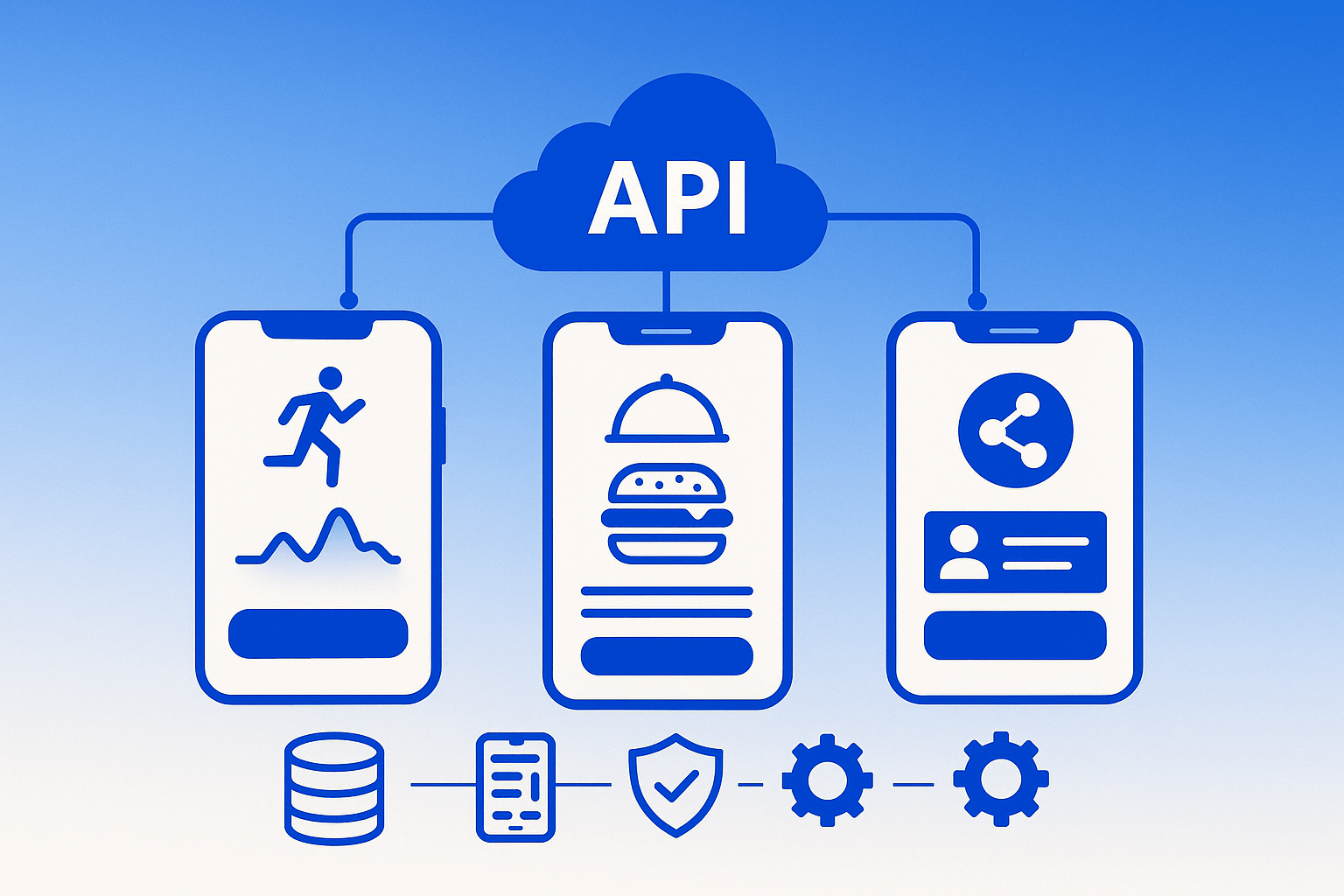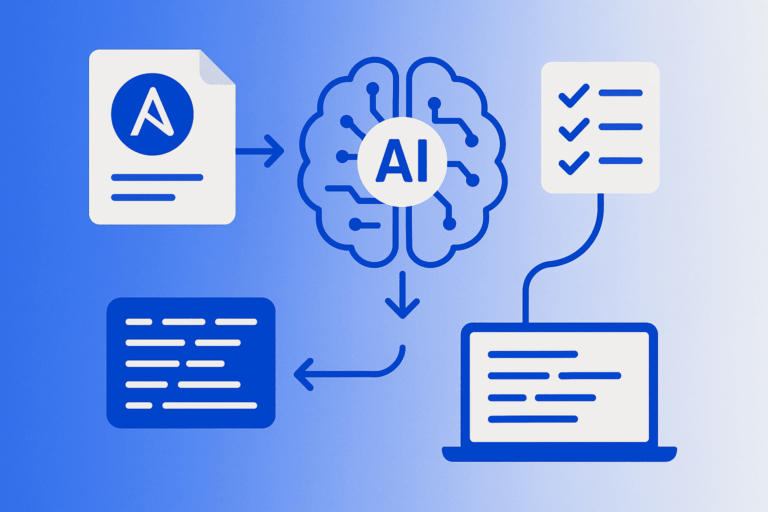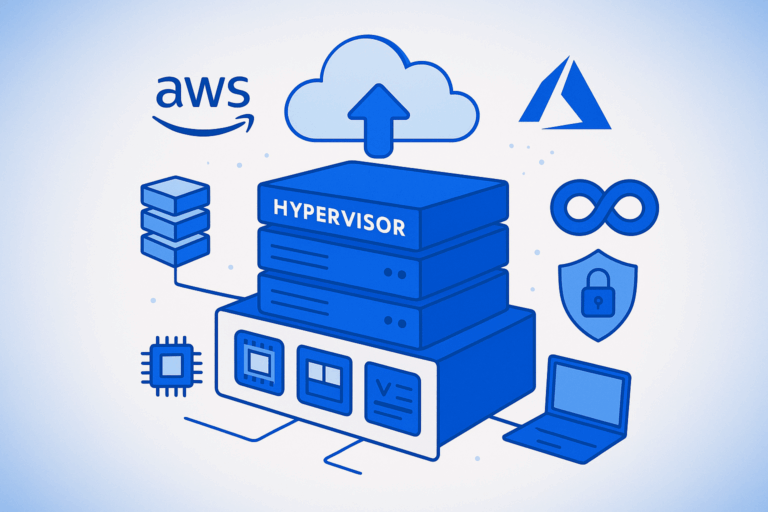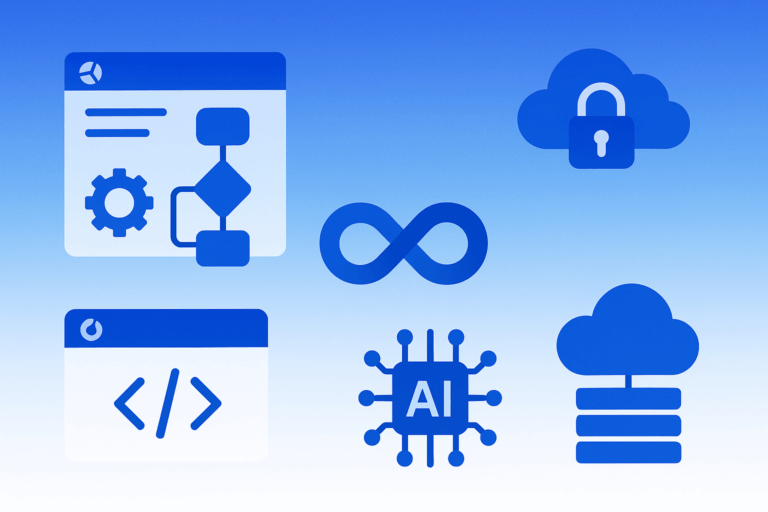Demystifying How Your Favorite Lifestyle Apps Actually Work

Beyond the Phone Icon🚀
Ever wondered what happens behind the sleek interface of your favorite fitness tracker when you log that morning run? 🏃♂️ Or how your food delivery app magically coordinates restaurants, drivers, and payments in real-time? The answer lies in a sophisticated digital ecosystem that most users never see – the intricate world of mobile app development, API architecture, and cloud-based infrastructure that powers our daily digital interactions.
In 2025, mobile applications have evolved far beyond simple phone utilities into complex, AI-driven platforms that process millions of data points every second. With the global AI software market expected to exceed $300 billion and 95% of new digital workloads running on cloud-native platforms, understanding these underlying systems isn’t just fascinating – it’s essential for IT professionals and business leaders navigating today’s DevOps-driven, security-conscious digital landscape.
The Hidden Architecture Revolution 🏗️
From Simple Apps to Complex Ecosystems
Modern lifestyle applications represent a fundamental shift from traditional software development. What appears as a simple “tap to order” interface actually triggers a cascade of microservices, real-time data processing, and AI-powered automation across multiple cloud platforms. Consider how a single food delivery order involves:
API orchestration between customer apps, restaurant systems, and driver platforms
Database synchronization across user profiles, inventory management, and payment processing
Real-time geolocation tracking powered by machine learning algorithms
Automated DevOps pipelines ensuring 99.9% uptime during peak hours
This complexity demands robust infrastructure as code solutions like Terraform and comprehensive cyber security frameworks to protect sensitive user data.

The Technology Stack Revolution
Today’s app development leverages cutting-edge technologies that would have been science fiction just a decade ago. Firebase, AWS, and Azure Cloud platforms now provide serverless architectures that automatically scale from handling dozens to millions of concurrent users. Meanwhile, AI automation has revolutionized user experiences through:
Hyper-personalized recommendations based on behavioral analytics
Predictive health insights in fitness applications
Real-time fraud detection in payment systems
Automated testing and continuous deployment through DevOps methodologies
Real-World Application Deep Dives 📱
Fitness Apps: The Wearable Data Ecosystem
Modern fitness applications like Strava and Peloton exemplify sophisticated real-time data architecture. These platforms process GPS coordinates, heart rate variability, and social interaction data simultaneously, creating what experts call a “digital fitness ecosystem”.
Technical Architecture Overview:
| Component | Technology | Purpose |
|---|---|---|
| Data Ingestion | Apache Kafka, IoT sensors | Real-time biometric data collection |
| Processing Layer | Machine Learning pipelines | Personalized workout recommendations |
| Social Graph | Graph databases | Community features and challenges |
| Mobile Sync | Firebase Realtime Database | Cross-device data synchronization |
The challenge lies in maintaining sub-second response times while processing thousands of data points from wearable devices. Solutions involve edge computing, caching strategies, and offline-first design principles that ensure seamless user experiences even during network interruptions.
Food Delivery: The Logistics Technology Marvel
Food delivery platforms represent some of the most complex multi-sided marketplace architectures in existence. DoorDash and Uber Eats coordinate restaurants, drivers, and customers through sophisticated API management and real-time optimization algorithms.
Core System Components:
Order Management APIs handling payment processing, inventory updates, and restaurant notifications
Geolocation Services optimizing delivery routes through machine learning
Real-time Tracking Systems providing transparency across all stakeholders
Automated Scaling Infrastructure managing traffic spikes during peak dining hours
The technical challenges include maintaining data consistency across distributed systems, implementing fault-tolerant payment processing, and ensuring API security when handling sensitive financial information.
Social Media: The Real-Time Communication Challenge
Platforms like Instagram and Twitter face unique architectural challenges in delivering real-time content feeds to billions of users. These systems employ NoSQL databases, content delivery networks, and distributed caching to maintain performance.
Architecture Highlights:
Graph Databases for modeling complex user relationships
Apache Kafka for real-time message streaming
Machine Learning for content recommendation algorithms
Multi-region deployment ensuring global accessibility and disaster recovery
Security in the Mobile-First Era 🔐
The API Security Imperative
With 48% increased cyberattack risks in 2025 and 95% of CISOs ranking API security as their top priority, protecting mobile app infrastructure has never been more critical. Modern security frameworks must address:
Authentication and Authorization through OAuth 2.0 and JWT tokens
Data encryption both in transit and at rest across all cloud platforms
Input validation and SQL injection prevention in database interactions
Rate limiting and DDoS protection for API endpoints
Real-world security incidents, such as the T-Mobile breaches affecting 76 million users through API vulnerabilities, underscore the critical importance of comprehensive mobile app security strategies.
Implementing Zero-Trust Architecture
Modern apps implement zero-trust security models that assume no implicit trust within the system. This involves:
Continuous authentication across all user interactions
Micro-segmentation of network traffic and data access
Real-time threat detection through AI-powered analytics
Automated incident response integrated with DevOps pipelines

DevOps and Cloud Automation Revolution ⚙️
Infrastructure as Code with Terraform
Terraform has revolutionized how development teams manage cloud infrastructure, enabling Infrastructure as Code practices that ensure consistency and scalability. Modern mobile app deployment involves:
Automated provisioning of AWS, Azure, or Google Cloud resources
Container orchestration through Docker and Kubernetes
Continuous Integration/Continuous Deployment pipelines
Monitoring and alerting systems for proactive issue resolution
Teams implementing DevOps methodologies report 3x faster deployment speeds and 25% reduction in time-to-market, making these practices essential for competitive advantage.
Cloud-Native Development
The shift to cloud-native architectures has fundamentally changed mobile app development. Serverless computing platforms like AWS Lambda and Azure Functions enable:
Automatic scaling based on user demand
Pay-per-execution pricing models reducing operational costs
Built-in resilience and fault tolerance
Integrated monitoring and performance analytics
Troubleshooting Guide: Common Mobile App Issues 🔧
API Connectivity Problems
Symptoms: Failed API calls, timeout errors, authentication failures
Solutions:
- Implement circuit breaker patterns for resilient API communication
- Use exponential backoff strategies for retry mechanisms
- Validate SSL certificates and API endpoint configurations
- Monitor API response times and error rates continuously
Prevention:
- Deploy API monitoring tools like Datadog or New Relic
- Implement comprehensive logging across all API interactions
- Use API versioning strategies for backward compatibility
Database Performance Issues
Symptoms: Slow query response, connection timeouts, data inconsistency
Solutions:
- Index optimization for frequently queried database columns
- Implement database connection pooling for efficient resource usage
- Deploy read replicas for load distribution
- Use caching layers like Redis or Memcached
Prevention:
- Regular performance monitoring and query optimization
- Database sharding strategies for horizontal scaling
- Implement automated backup and disaster recovery procedures
UI/UX Performance Problems
Symptoms: Poor user engagement, high bounce rates, slow loading times
Solutions:
- Image optimization and lazy loading for faster page loads
- Code splitting and bundle optimization for JavaScript applications
- Implement progressive loading strategies
- A/B testing for user interface improvements
Prevention:
- User-centered design methodologies with continuous feedback loops
- Performance budgets and monitoring thresholds
- Regular usability testing with target user groups
Security Vulnerabilities
Symptoms: Data breaches, unauthorized access, API exploitation
Solutions:
- Immediate security patching and vulnerability assessments
- Access control audits and privilege reviews
- Penetration testing and security code reviews
- Incident response planning and forensic analysis
Prevention:
- Regular security audits and compliance assessments
- Secure coding practices and developer training
- Automated security scanning in CI/CD pipelines
How Devolity Transforms Your Mobile App Success 🌟
Devolity’s expertise in mobile app development and cloud solutions addresses the complex challenges outlined in this article. Our comprehensive approach combines cutting-edge technology, security best practices, and DevOps excellence to deliver scalable, secure applications.
Devolity’s Technical Excellence
Cloud-Native Architecture: Expert AWS, Azure, and Google Cloud implementations with 99.9% uptime guarantees
Security-First Development: PCI-compliant infrastructure with zero-trust security models and comprehensive threat protection
DevOps Automation: Terraform-based infrastructure provisioning with automated CI/CD pipelines and monitoring solutions
AI Integration: Advanced machine learning capabilities for predictive analytics and user personalization
Certifications and Achievements
✅ AWS Certified cloud architects and DevOps engineers
✅ Azure Solutions expertise with enterprise-grade implementations
✅ ISO 27001 security compliance and GDPR data protection standards
✅ 100+ successful mobile app deployments across healthcare, fintech, and lifestyle sectors
Client Success: Devolity helped a healthcare startup reduce patient engagement costs by 40% through AI-powered personalization and cloud optimization, while maintaining HIPAA compliance and enterprise security standards.
Practical Implementation Example 💡
Consider a fitness tracking application similar to Strava that requires real-time GPS tracking, social features, and wearable device integration:
Architecture Implementation
Frontend Layer:
├── React Native mobile apps (iOS/Android)
├── Progressive Web App for desktop users
└── Real-time UI updates via WebSocket connections
API Gateway Layer:
├── AWS API Gateway with rate limiting
├── OAuth 2.0 authentication with JWT tokens
└── API versioning and documentation
Microservices Layer:
├── User service (authentication, profiles)
├── Activity service (GPS tracking, workout analysis)
├── Social service (feeds, comments, challenges)
└── Notification service (push notifications, emails)
Data Layer:
├── PostgreSQL for user profiles and structured data
├── MongoDB for activity logs and sensor data
├── Redis for session caching and real-time features
└── S3 for media storage and backups
Infrastructure Layer:
├── Kubernetes cluster on AWS EKS
├── Terraform for infrastructure as code
├── CloudWatch for monitoring and alerting
└── CloudFront CDN for global content deliveryKey Implementation Benefits
Real-time Performance: Sub-200ms API response times through optimized database queries and strategic caching
Scalable Architecture: Auto-scaling capabilities handling 10x traffic spikes during peak usage periods
Security Compliance: End-to-end encryption, secure API endpoints, and regular security audits
Developer Experience: Automated testing, continuous deployment, and comprehensive monitoring
Looking Ahead: The Future of Mobile App Development 🔮
As we advance through 2025, several trends will shape the mobile app development landscape:
AI-First Development: Machine learning integration becoming standard across all app categories
Edge Computing: Processing moving closer to users for ultra-low latency experiences
5G Optimization: Apps designed specifically for 5G network capabilities and bandwidth
Sustainable Computing: Energy-efficient coding practices and green cloud computing initiatives
Privacy-by-Design: Zero-knowledge architectures and decentralized data storage solutions
#MobileAppDevelopment #APIArchitecture #CloudTechnology #DevOpsAutomation #CyberSecurity #UIUXDesign #DatabaseArchitecture #TerraformInfrastructure #AWSCloud #AzureCloud #AIAutomation #DevOpsEngineer #MicroservicesArchitecture #MobileDevOps #AppSecurity #CloudNative #InfrastructureAsCode #RealTimeData #ScalableArchitecture #DigitalTransformation
Modern mobile applications represent the convergence of artificial intelligence, cloud computing, and sophisticated engineering practices that transform simple user interactions into complex, data-driven experiences. Understanding these underlying systems – from API architecture and database design to DevOps automation and cyber security – is essential for IT professionals and businesses seeking to build competitive, scalable solutions in today’s mobile-first world.
The apps we use daily are marvels of modern engineering, seamlessly combining real-time data processing, machine learning algorithms, and distributed cloud infrastructure to deliver experiences that feel magical but are grounded in solid technical principles. As the industry continues evolving toward AI-first development and cloud-native architectures, mastering these foundational concepts becomes increasingly crucial for success in the digital economy.
Transform Business with Cloud
Devolity simplifies state management with automation, strong security, and detailed auditing.







